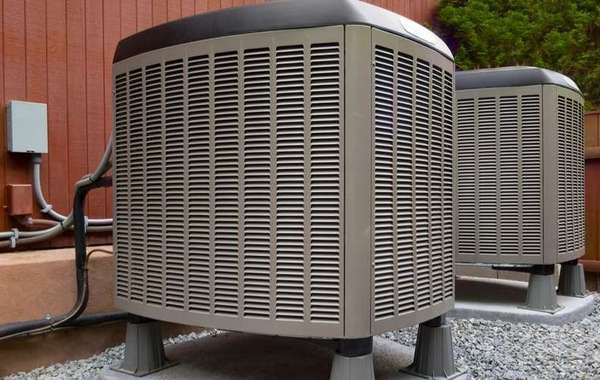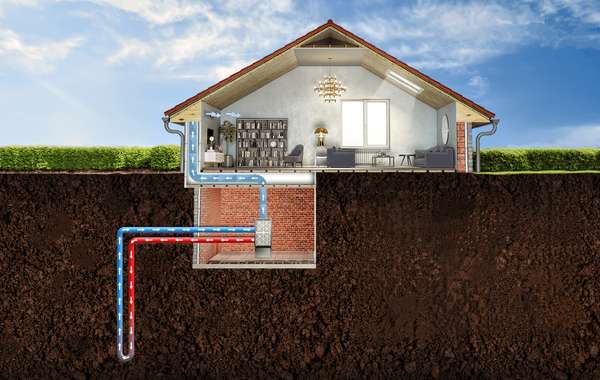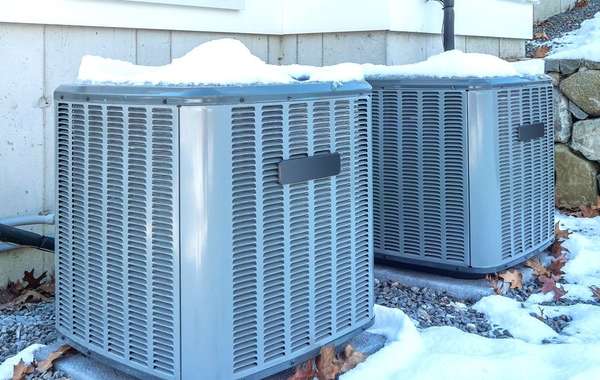Are heat pumps really more efficient?
When it comes to residential heating and cooling systems, few types of heating systems are as energy efficient as heat pumps. But what exactly are heat pumps and how do they work? In short, a heat pump is simply an electrically powered device that is capable of transferring heat from one place to another very efficiently - which also means they can cool spaces if the direction of heat transfer is reversed. Though it may seem counterintuitive at first, heat can actually be extracted from cold air and added to warmer air.
To explain heat pumps in a more practical manner, let us step back a little bit to understand the basics of heat transfer. First of all, for the sake of an analogy, let’s imagine heat as a big body of water. Logically, water would flow from a higher place to a lower place. Similarly, heat naturally flows from a hotter place to a colder place.
Does a heat pump generate heat?
So how is it that we can extract heat from a cold place and send it to a warmer place? Well, it is a little bit like moving water from a low place to a high place. All you need is a pump! Heat is actually defined by the movement of the molecules that make up matter. So in essence, all of the air in the world that is warmer than absolute zero (-273 °C, the temperature at which molecules actually stop moving) contains some amount of heat. So technically, it is possible to extract heat from air of any temperature and send it somewhere else, all it takes is a little energy to pump the heat to where we want it.

|
How do heat pumps work to be more efficient than other types of electric heating?
Let me use another analogy I heard recently to explain in more depth how heat pumps work more efficiently than an electric furnace or baseboard heaters - imagine for one moment an elevator in a tall building. Elevators use an electric motor and gearing to lift the passangers, but gravity is what gets the elevator cage back to the bottom of the building - so elevators use a lot more electricity when going up (the path of most resistance - which is equivalent to electric resistance heating as used in electric furnaces and baseboard heaters) compared to coming back down (the path of least resistance - equivalent to using electricity to drive the compressor in a heat pump).
Coincidentally, and as an ineresting side note, researchers from the International Institute for Applied Systems Analysis (IIASA) have conceived a gravity-based system that would use elevators in high-rise buildings to generate and store electricity. And the Bullitt Center in Seattle already operates a modified elevator with regenerative braking that uses 60% less electricity - how cool is that?!

So are heat pumps used a lot? Are they a proven technology?
Heat pumps are actually very commonly used in our everyday lives. In fact, this exact process of heat transfer from where it isn't wanted to where it is wanted is operating in our homes right now, every day, as refrigerators are actually a typical form of heat pump.
The refrigeration / heating cycle in heat pumps
When it comes to cooling, heat pumps and refrigerators operate in pretty much the same way. Heat is extracted from the air where it isn't wanted and moved outside of the space to be cooled. Heat pumps have three main components: the evaporator, compressor and condenser. Each plays a critical role in the way heat pumps move heat from one location to another. Heat pumps are able to extract heat from air by using a liquid refrigerant (more on these later) to absorb and remove heat.
The four-step process in a fridge or heat pump works by converting liquid refrigerant into a gas, and then back into a liquid, and then with the use of a fan efficiently distribute the cool air (like the systems found in higher end fan assistes fridges). This process is correctly called "phase conversion", or in layman’s terms, vapour-compression refrigeration cycle, which is a fancy name for a thermodynamic process that is commonly used for heat transfer applications.
To explain, the four basic steps in a heat pump operate as follows:
- The process starts where the refrigerant is in a state known as a saturated vapour. This saturated vapour enters a compressor where the pressure is increased and, consequently, the temperature as well.
- Hot vapour is then passed through a condenser, where it is condensed back into liquid form. The result of this condensation is that the refrigerant will lose its heat. This is what is what is occurring right now in every household refrigerator, and why it is warm in the back as the heat dissipates via the cooling fins.
- The liquid refrigerant then passes through an expansion valve, where the pressure drops and the liquid becomes much colder. At this point, the fluid is typically colder than the space that needs to be cooled.
- Lastly, the cold fluid, which is now partially evaporated due to the pressure drop, passes through an evaporator, which typically consists of a coil or long tubes. A fan then blows air over the coil or tubes, cooling the air. This causes the refrigerant to evaporate within the tubes, returning it to its original saturated vapour state.
Basically, what is going on is that a refrigerant is being forced to go through cycles of condensing and evaporating where the temperature and pressure rise and drop significantly. These temperature fluctuations are then used to heat or cool a stream of air or water, depending on the application.

How is a heat pump different from a refrigerator?
Domestic heat pumps equipped with reversible operation can provide heating as well as cooling by reversing the flow of heat from outside to inside - not something that would be typically useful for a fridge! Some models can even be used to efficiently and economically augment domestic hot water heating. The way that heat pumps work during cold weather and their efficiency depends on the type of heat pump installation chosen.
- Air-to-air central heat pump systems extract heat from outdoor air and condense that energy until it’s hot enough to keep everyone comfortably warm inside the home in winter, or the opposite in summer by keeping interiors comfortably cool in hot weather.
- Geothermal heat pumps take advantage of the thermal energy stored in the water beneath the earth’s surface to heat homes and businesses - but because of the cost and complications that can lead to reliability issues we'd generally recommend keeping these for larger surface area use.
- Ductless heat pumps in contrast to central-air heat pump systems, deliver warm or cool air directly into living spaces in the home through individual air handlers. Most often retrofitted in a traditionally performing home with non ducted heating, these are probably best reserved for supplemental use as a heating renovation where the original second heating system remains as a backup heat source to the heat pump for really cold weather or for power outages.
If already heating a home with a fossil fuel fired central-air furnace that is due for replacement, a high-efficiency central heat pump swap offers an energy-efficient and more sustainable way to stay warm in winter or cool in the height of summer.
So that explains a bit about the science behind heat pumps, but what exactly is it that makes heat pumps so interesting for residential heating and cooling applications? And which are the best heat pumps for efficiency and reliability and which work best in cold climates? The advantages of heat pumps are quite numerous, let's go through some of them now.
What are the advantages of heating with a heat pump?
First of all, the amount of energy typically required to run the compressor and the fans or pumps in a heat pump is usually significantly less than the amount of heat that can be moved, or in practical terms, 'generated'. Heat pump performance is usually measured by something called the ‘coefficient of performance’ or COP. The COP is the amount of heat delivered, or moved, divided by the amount of energy required to move that heat. The COP of an average residential heat pump is usually somewhere around 3, which means that for every one unit of energy put into the heating system, 3 units are transferred. When this is compared to an electric baseboard heater, which has a COP of 1 (every unit of energy put into an electric baseboard comes out as heat), heat pumps suddenly become quite attractive!
Another interesting advantage of heat pumps compared to other residential heating or cooling systems is that a heat pump can actually be configured to do both heating and cooling. The thermodynamic cycle described above can be reversed in order to switch it from one function to the other. Instead of taking heat from outside to heat a home on the inside in winter, a reversible heat pump can also take heat from inside and throw it outside in order to cool homes in summer.
This can help save money on purchase price and maintenance costs, as we then have one machine doing the job previously done by two. This can also help to save basement storage space, as central heat pumps are typically smaller than an equivalent gas furnace and air conditioner combo.
Other interesting advantages include increased indoor air quality, since there are no fuels being burned and exhausted and the system will always add fresh air into the home. Heat pumps are also quite versatile; they can be used to heat incoming air from the outside, or as an air-to-water heat pump for generating residential hot water. Heat pumps are also used in conjunction with geothermal heating and cooling, where the heat is either taken from, or added back to the ground.
Heat pumps may sound like a pretty magical device that can accomplish anything; however they do have a few important downsides. First of all, their performance is very much dependent on the climate. In very cold climates where the temperature often drops below -10 degrees Celsius, heat pumps can become less effective unless being careful to choose the latest generation of cold climate heat pumps.
Although heat can still be extracted from cold air, only the best heat pumps are suited to very cold temperatures for two reasons: 1) the COP tends to drop significantly in very cold weather, thus negating the efficiency advantage; 2) In colder climates such as most of Canada and the northern states, the heating demand of a home tends to be much higher than the cooling demand. So much so that in moderately insulated homes it can be impractical to have a heat pump as the sole source of heat.
Do heat pumps work in cold climates?
Generally speaking, in colder climates, unless the home is exceptionally efficient, it has traditionally been recommended to back up a heat pump with electric baseboards or some other form of heating to ensure the house stays warm during the coldest days of winter. There is an argument that can be made, however, for investing in additional insulation in new homes rather than additional heat generation, so that the heat pump can operate at a more optimal efficiency since less capacity would be required.
Also, with the right amount of insulation and a properly designed home for passive solar heat gains, it is even possible to safely heat homes during the coldest days of winter with only a heat pump. Take note that although the system may save money in the long run, the initial costs of heat pumps tend to be a bit higher than other systems, especially if a second backup heating system is also required.
Lastly, the heat generated by a heat pump is typically less intense than a conventional furnace. For example, a heat pump typically generates heat at temperatures between 32 and 37 degrees Celsius, which is slightly lower than body temperature. By comparison, a typical fossil gas furnace will generate heat at closer to 50 degrees Celsius, which is much more comfortable on a cold winter day. Some people find this lower temperature heat a little uncomfortable in colder weather, particularly in a poorly insulated house.
So when in the market for a new central heating and cooling system for the home, a heat pump should definately be considered, especially as many states are moving to ban fossil fuel heating systems. How much sense it makes will depend on how well insulated the house is, the climate zone, and how sustainably minded the future owners are.
In a super-insulated home a heat pump could provide all the heat and comfort needed, but in a house built to minimum code a backup heat source might be prudent. So as a homeowner or builder, this is where a compromise needs to be decided between investing in insulation or an additional heating system. Either way, heat pumps are definitely a very efficient heating and cooling source for homes and in many cases the advantages can outweigh the disadvantages.
We also have a guide on air-to-water hybrid electric heat pump hot water heater that borrows that efficiency and significantly cuts the energy required to meet our domestic hot water needs.
Now we've explained heat pumps and how they work, learn more about efficient home heating and how to reduce the carbon footprint of homes on the following pages and in the Ecohome Green Building Guide.
Find out about the benefits of a free Ecohome Network Membership here. |































Comments (0)
Sign Up to Comment